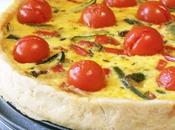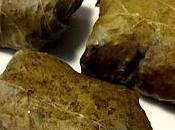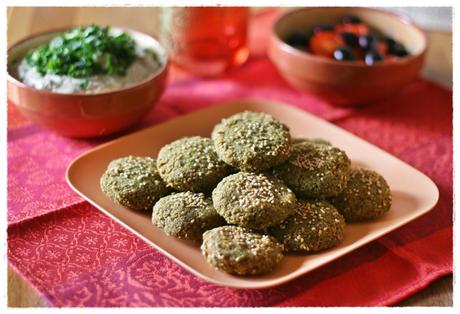
Ahlan wa sallan fi Misr
Benvenuti in Egitto
Mi sembra ieri che l’Abbecedario Culinario Mondiale ha preso il via. Io continuavo a pensare che ora che arrivassimo alla I del Il Cairo ci sarebbe voluto tempo… ma i mesi sono volati ed ora tocca proprio a me ospitare, con tanta gioia, una tappa dell’Abbecedario!
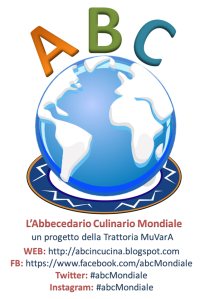
Vi voglio tutti pronti con abiti leggeri, magari anche un costume …che oggi si parte verso il caldo… siamo arrivati infatti alla lettera di I de Il Cairo e siamo appena atterrati in Egitto! :)
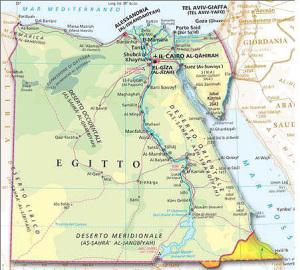
Non credo che l’Egitto sia uno stato che richieda tante presentazioni, la sua storia lo precede, una storia millenaria che racconta di un popolo evoluto, ricco …una civiltà ancora avvolta da misteri ma che ancora ci insegna. Le tracce della grande storia degli Egizi le troviamo ancora nelle piramidi, nella Valle dei Re, a Luxor od in tutti i luoghi storici e turistici famosi in tutto il mondo.

Negli ultimi anni il turismo egiziano si è spostato anche sulle coste, grazie al bellissimo Mar Rosso e alle località più famose come Sharm el Sheik o Hurghada, diventando un paese che ha molto da offrire ai turisti, dalla storia millenaria al mare, dalle escursioni tra piramidi e templi alle immersioni, dalla crociera sul Nilo alle gite nel deserto in sella ai dromedari. Tutto ciò godendo anche di una cucina squisita, profumata e variegata!
Io non voglio dilungarmi troppo su quella che è la storia, la geografia, la morfologia o la politica di questo paese la cui fama lo precede! …altrimenti mi ritornano in mente le tesine scolastiche e non mi diverto più! ;)
Infondo il nostro Abbecedario è un tour gastronomico quindi siamo qui per scoprire di più sulla cucina dell’Egitto, sulle sue usanze e di sicuro, addentrandoci, scopriremo comunque qualcosina di più sulla storia della sua gente e della sua terra! :)
Innanzitutto ci tengo a menzionare quelle che sono state le mie due fonti principali per queste e le future ricette egiziane che condividerò con voi… prima, grande e validissima risorsa è stata Morena, mia amica e collega che ringrazio di cuore. Sposata con un egiziano, Morena mi ha dato idee, ricette, spunti, suggerimenti, trucchi ed anche alcuni ingredienti!
La seconda fonte è stato il libro “La cucina del Medio Oriente e del Nord Africa” di Claudia Roden. L’autrice, di origini egiziane, ha scritto questo suo libro nel 1968 e da allora, come lei stessa dice, è diventato parte integrante della sua vita. Sia la Roden che il libro sono considerati delle vere pietre miliari per quanto riguarda la cucina mediorientale. Ha pubblicato moltissimi libri ma questo suo primo libro, dal 1968 è stato ristampato più e più volte ed è sempre una fonte inesauribile di ricette, racconti e storia della cucina araba e nordafricana. La versione italiana è edita da Ponte alle Grazie per la collana Il lettore Goloso, di cui è stato il primo titolo pubblicato.
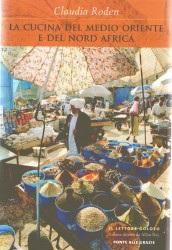
Una cosa che scrive proprio la Roden nel suo libro mi ha aiutato a capire meglio la vastità della cucina mediorientale e di come molte ricette non siano prettamente legate ad una sola nazione ma tocchino piú paesi del Medio Oriente. L’autrice racconta di come il cibo, per lei e i suoi parenti e amici, esuli al di fuori del loro paese, fosse una maniera per stare assieme, ritrovarsi e soprattutto per ricordare e tenere vive le tradizioni, tramandandole anche. Da lì la sua idea di raccogliere queste ricette e storie e la sua grande opera di ricerca. Nel libro racconta di come più approfondiva la sua ricerca più si rendeva conto che piatti che lei riteneva fossero egiziani in realtà, magari con altri nomi, si trovavano ed a volte originavano, in molti altri paesi mediorientali.
Da questo spunto c’è da perdersi tra i suoi racconti, su come ha cercato sia gli elementi di unione che le differenze tra i tanti paesi trattati nella sua opera (Egitto, Turchia, Iran, Marocco, Libano, Grecia, Siria, Iraq, Arabia Saudita, Yemen, Sudan, Algeria, Tunisia e Israele). Io per non perdermi troppo sono andata in cerca, per questa tappa, di quelle che sono ricette d’origine egiziana e che l’autrice correda di bei racconti.

La cucina egiziana ha come protagonisti la carne, il pesce, le verdure il tutto accompagnato da riso o pane. Le carni più usate sono quelle di agnello, manzo e pollo e tra le verdure primeggiano, le fave, le melanzane, la bamia (l’okra), i peperoni, le zucchine. Tra la frutta troviamo la banana, i datteri, l’uva, le prugne ed ovviamente tanta frutta secca. dalle noci, alle mandorle, ai pistacchi, tutta frutta che si trova spesso nei dolci egiziani, i quali vengono poi arricchiti con miele o sciroppo di zucchero.
Una storia che mi ha affascinato, mentre la leggevo, è quella sui metodi e tempi di cottura. Una volta prima che i forni casalinghi entrassero nelle case, era d’uso cucinare le pietanze su dei fornelletti a petrolio chiamati fatayel. Era un metodo di cottura lungo e lento e nonostante gli attuali fornelli siano entrati nelle case la cottura lunga, soprattutto delle carni è tutt’ora in uso. Il che è stato anche una conseguenza dell’usanza sociale per cui le donne restavano in casa, quindi legate alla cucina come punto di raccolta e di lavoro. Un’altra usanza poi era quella di portare a cuocere piatti nei forni dei panettieri locali e mi immagino, anche in base alla descrizione dell’autrice, questi momenti in cui la gente si affollava sulle strade od intorno ai forni, con in mano pentole e vassoi, in attesa di cuocere le loro pietanze.
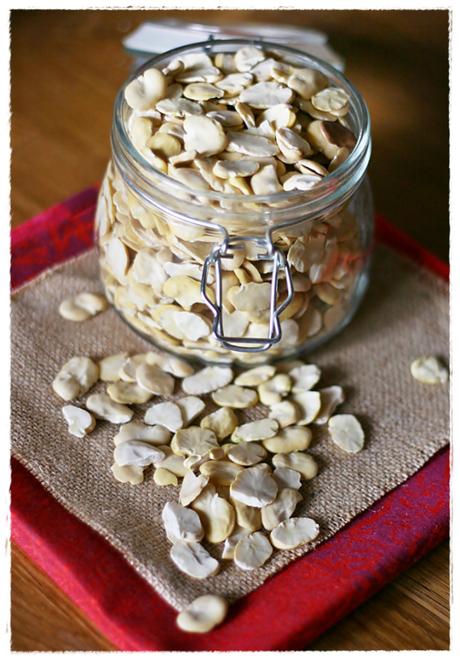
Le carni, oltre ad essere cotte in stufati dalla lunga cottura, vengono spesso cucinate alla brace, in spiedini, i famosi kebab e, che siano di pollo, manzo o pesce, sono i più diffusi street food mediorientali.
Ovviamente nella preparazione di qualsiasi piatto non possono mancare le erbe aromatiche e spezie! Le immagini delle bancarelle dei mercati stracolme di sacchetti di polveri colorate ricordano subito i colori ed i profumi delle cucine mediorientali. In Egitto tra le più comuni troviamo il prezzemolo, il coriandolo, sia in foglie fresco che i semi essiccati, l’erba cipollina, il cumino, il fieno greco, la menta, a volte anche l’aneto, il timo e l’origano.
I cereali più diffusi sono il frumento, spezzato che è più in uso nelle campagne ed il riso, più comune in città e accompagnamento di moltissime pietanze. Altro elemento che non deve mai mancare è il pane, utile per attingere alle molte salsine e sughi. Le verdure vengono consumate crude, cotte e condite con olio, farcite e stufate o messe sottaceto. Di gran uso sono i legumi di ogni genere, lenticchie, ceci , fave.
E proprio dalla fave voglio partire per raccontare la prima ricetta che vi presento oggi… i falafel!
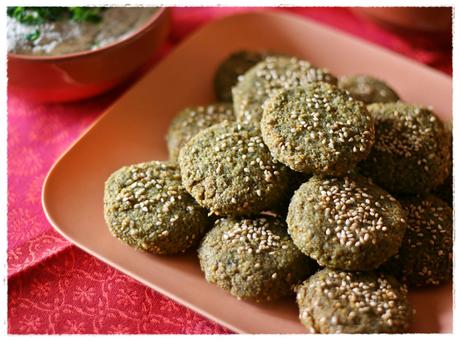
Falafel di fave
I falafel sono delle polpettine davvero famose in tutto il medioriente e oltre… ma il loro paese d’origine è proprio l’Egitto dove non vengono fatte coi ceci (come in molti altri paesi) ma con le fave secche, legume principe della cultura egiziana.
I cristiani copti, che si dice siano i diretti discendenti degli antichi egizi, rivendicano la paternità di questo piatto, di origini quindi antichissime. Queste polpette venivano consumate principalmente durante la quaresima cristiana, quando non si poteva mangiare carne ma al giorno d’oggi i falafel sono davvero onnipresenti e sono il piatto principe della cucina egiziana insieme al Ful medames (sempre a base di fave).
Le falafel sono uno dei tantissimi Mezze - antipasti che si possono trovare sulle tavole egiziane e mediorientali. I mezze sono una vera e propria tradizione, destinati ad essere gustati in tranquillità, questi stuzzichini simboleggiano un vero e proprio stile di vita. Ce ne sono un’infinità, da quelli semplici, con ingredienti messi semplicemente in ciotoline, come olive, erbe aromatiche miste o verdure varie e quelli più elaborati, cucinati e ricchi, come polpette varie ed involtini. Vengono accompagnati ovviamente da salse varie e pane! …quindi come non cominciare da un po’ di mezze?!

I Falafel li ho voluti preparare come prima ricetta, insieme al Baba Ghanoush e al pane pita poiché oltre ad essere un antipasto, quindi un inizio :)… sono anche le prime delizie egiziane che ho mangiato anni fa proprio a casa della mia amica! …da allora è stato amore al primo assaggio e con gioia ve li propongo oggi, seguendo le ricette e i consigli della mia amica e di suo marito… per dei piatti immersi al 100% nella tradizione egiziana!
- 250 gr di fave
- 30 gr di erba cipollina (un bel mazzetto)
- sale
- pepe nero
- 2 cucchiaini di coriandolo in polvere
- semi di sesamo
Mettete in ammollo le fave secche per almeno una notte o anche più. Cambiate l’acqua più volte. Scolatele bene e frullatele fino ad ottenere un composto ben tritato. Unite l’erba cipollina e tritate assieme anche questa. Unite infine sale, pepe e coriandolo. Formate delle polpettine schiacciate, posizionatele su un piatto e lasciatelo in frigo per una mezz’oretta. Prima di friggerle cospargetele con dei semi di sesamo, schiacciandoli un po’ per farli aderire. Friggetele in abbondante olio di semi finchè diventano marroncine. Fatele asciugare su carta assorbente e servitele.
Note: come ogni piatto si possono trovare piccole varianti, nel libro della Roden in piú c’erano l’aglio, il cumino ed al posto della cipollina, cipollotti con parte verde. Io ho seguito la ricetta che ho gustato ed assaggiato a casa dei miei amici egiziani, in cui il tocco della cipollina (abbondante) regala sapore ma anche il colore verde intenso tipico delle falafel egiziane.
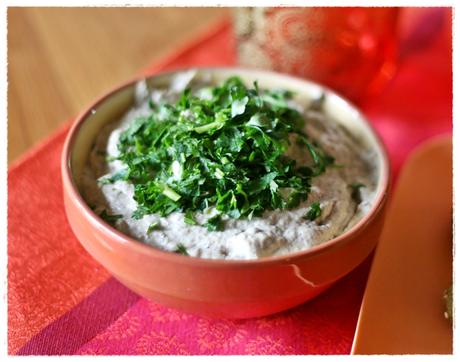
Baba Ghanoush – Crema di melanzane e tahina
Altro piatto molto famoso, che spesso accompagna i falafel, è il Baba Ghanoush una crema di melanzane arrostite e tahina. Le dosi possono variare in base ai gusti personali, assaggiatela mentre la preparate (cercando di non mangiarla tutta ;) ) …ed aggiustatela a vostro gusto! …è a dir poco meravigliosa!
- 2 melanzane grandi
- 5/ 6 cucchiai di tahina
- prezzemolo
- sale
- succo di limone
- 1 spicchio d’aglio
- 1 cucchiaino di coriandolo in polvere
Bucherellate le melanzane con una forchetta, mettetele su una teglia da forno ed infornatele a 200° per almeno un’oretta o finchè tenere e con la pelle tutte raggrinzita. Lasciatele intiepidire e spellatele. Raccogliete la polpa in un colino e schiacciatela per far fuoriuscire l’acqua. Frullate la polpa con la tahina, succo di limone, aglio, coriandolo e sale. Assaggiate e aggiustatela a vostro gusto unendo altra, tahina, sale o limone. Sevitela con del prezzemolo tritato sopra.
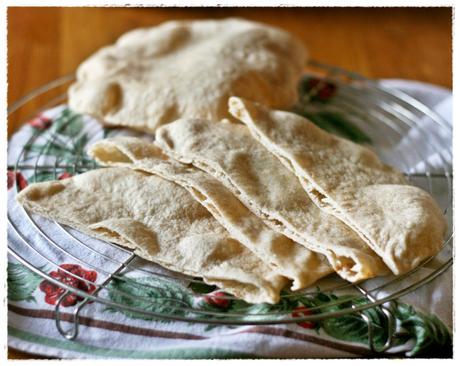
Aish Baladi – Pane Pita semintegrale egiziano
Il pane pita o pane arabo è ovviamente presente anche in Egitto. E’ un pane sottile, morbido (non croccante) con poca mollica ed una tasca interna che si crea in cottura. Generalmente il pane pita è cotto su pietra in forni a legna ma che con alcuni accorgimenti è possibile riprodurre anche a casa.
Se di sola farina bianca è chiamato Aish Shami, se miscelato con farina integrale (come quello che ho fatto io) è chiamato Aish Baladi.
Questi pani volendo si possono guarnire con semi e spezie varie. Se avanzano, basterà riscaldarli un attimo per farli ritornare fragranti e morbidi.
Io ho dovuto fare vari tentativi per aver un pane ad hoc! …ed alla fine i consigli della mia amica Morena sono stati decisi! …all’inizio avevo steso il pane in dischi e lasciato lievitare ma così facendo ho ottenuto un pane con troppa mollica (quello nella foto ripieno con le falafel). Era morbido, sempre buono, abbastanza gonfiato ma non del tutto. Al che ho chiesto consigli ed ho imparato che l’impasto va fatto lievitare una seconda volta come pallina e steso solo prima di infornarlo, così resta poca mollica. Inoltre per far sì che gonfino bene e si formi la tasca, è bene usare il forno ventilato (la prima volta l’ho usato statico), ripiano basso e meglio se vicino alla ventola. Con questi accorgimenti il pane si è gonfiato subito ed è restato bello morbido.
- per 4 pita:
- 100 gr di farina 00
- 50 gr di farina integrale
- 1 cucchiaino di sale
- 1 cucchiaio d’olio evo
- 70 ml circa di acqua
Impastate gli ingredienti fino ad ottenere un impasto morbido ed elastico. Lasciate lievitare fino al raddoppio, in una ciotola, coperto con pellicola. Riprendete l’impasto e formate delle palline. Lasciate raddoppiare, sempre coperte fino al raddoppio. Preriscaldate il forno alla massima temperatura (il mio arriva a circa 250°) ed impostatelo sul ventilato. Stendete ogni pallina in cerchi molto sottili, metteteli su una teglia da forno, senza carta o altro ed infornate nel ripiano più basso. I pani devano gonfiarsi poco dopo e vanno tolti prima che prendano colore. Toglierli dal forno e farli raffreddare su gratella.
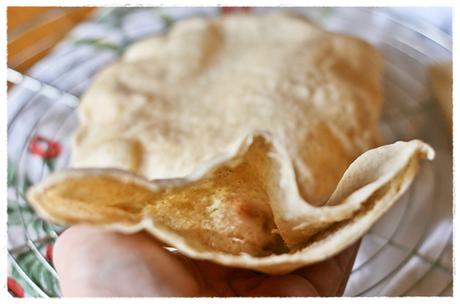

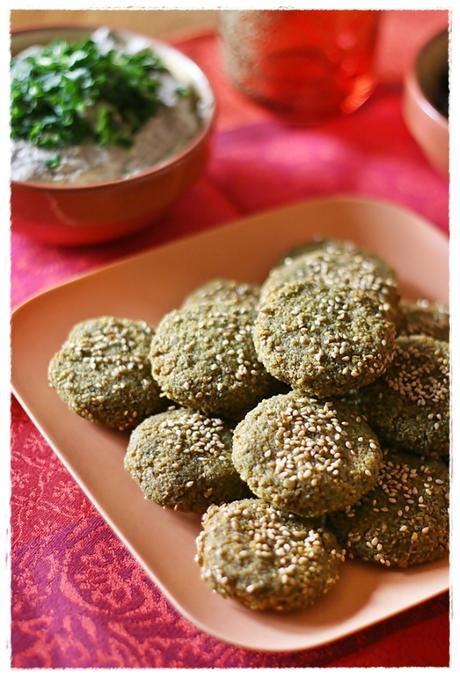
Ahlan wa sallan fi Misr
Welcome to Egypt
It seems only yesterday that the World Culinary ABC has started…but the months have flown by and now it’s up to me to host, with much joy, one of this tour culinary journey!

I want you all ready with summer clothes, cos today we move to hot weather… in fact we got the letter I of Il Cairo and we just landed in Egypt! :)
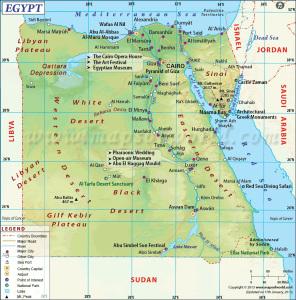
I don’t think that Egypt is a state that requires a lot of presentations, history precedes it, a thousand-year history that tells of a rich and highly evolved population… a civilization still shrouded in mystery but who still have a lot to teach. The traces of the great history of the Egyptians are still in the pyramids, the Valley of the Kings, in Luxor or in all historical and touristic places famous all over the world.
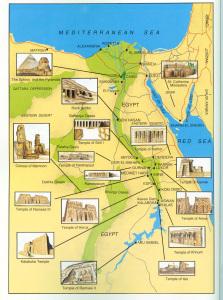
In recent years, the Egyptian tourism includes the coastal areas, thanks to the beautiful Red Sea and the most famous resorts like Sharm el Sheikh or Hurghada, becoming a country that has much to offer to tourists, from ancient history to the sea, from trips between pyramids and temples to diving, from the Nile cruise to the desert excursions by riding the camels. All this also enjoying an exquisite, fragrant and varied cuisine!
I don’t want to dwell too much on what is the history, geography, morphology or the politics of this country whose reputation precedes him! …otherwise it reminds too much of school times and It’s not funny anymore! ;)
Our World Culinary ABC, is a culinary tour so we are here to find out more about the cuisine of Egypt, its customs and for sure, the more we’ll learn about it the more we’ll discover about the history of his people and his land! :)
First of all I want to mention the two main sources for these and future Egyptian recipes that I will share with you. First, large and very valuable resource was Morena, my friend and colleague whom I warmly thank. Married to an Egyptian, Morena gave me ideas, recipes, ideas, tips, tricks and also some ingredients!
The second source was the book “The new book of Middle Eastern food” by Claudia Roden. The author, of Egyptian origin, wrote this book in 1968 and since then, as she says, has become an integral part of his life. Both Roden that the book are considered true milestones concerning Middle Eastern cuisine. She has published many books since then but this first book, since 1968 has been reprinted over and over again and it is always an inexhaustible source of recipes, stories and history of the Arab and North African cuisine.
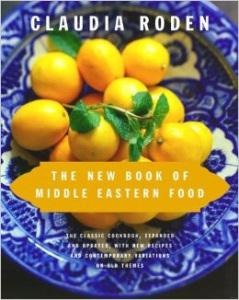
One thing that Claudia Roden writes in her book really helped me to better understand the vastness of Middle Eastern cuisine and how many recipes are not strictly tied to a single nation but they touch more countries in the Middle East. The author tells how the food, for her, her family and friends, exiles outside their countries, it was a way to get together, meet and above all to remember and keep the traditions alive and to hand them down as well. From there her idea to collect all these recipes and stories and her great work of research. The book tells how the more she researched the more she realized that many dishes that she believed were actually Egyptians, sometimes they originated in many other Middle Eastern countries and they were known with other names.
You can really get lost among her tales on how she searched for both the elements of unity and the differences between the cuisine of all the countries she covered in her work (Egypt, Turkey, Iran, Morocco, Lebanon, Greece, Syria, Iraq, Saudi Arabia, Yemen, Sudan, Algeria, Tunisia and Israel). As I didn’t want to get lost… I did look straight away for recipes with Egyptian origin which Claudia Roden match as well with interesting stories.
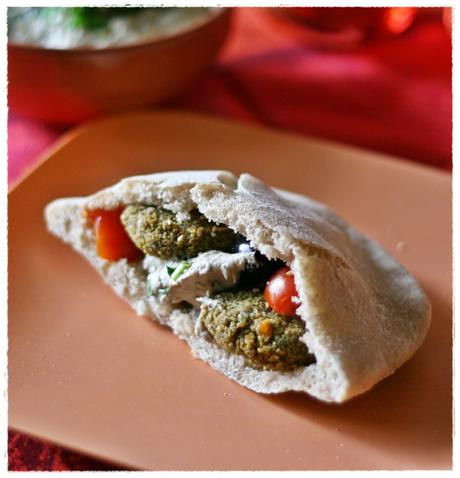
Egyptian cuisine has as protagonists meat, fish, vegetables, all accompanied by rice or bread. The most used meats lamb, beef and chicken. As vegetables, the most common are beans, eggplant, bamia (okra), peppers, zucchini. Among fruit you can find bananas, dates, grapes, plums and of course dried fruit like walnuts, almonds, pistachios, all fruit which are often used in Egyptian pastries, enriched as well with honey or sugar syrup.
A story that fascinated me, while I was reading the book, is the one about methods and cooking times. Once before current ovens where in use, there was the habit to cook food over small oil stoves called fatayel. It was a long, slow cooking method and despite the current stoves and ovens are entered houses the long cooking method, especially to cook meat, is still in use. This has also been a consequence of the social custom social where women usually stayed at home, so tied to the kitchen as a place where to work and meet. Another habit was to bring food to cook in the ovens of local bakers and I imagine, also based on the description of the author, all these people crowding the streets or around the ovens, holding pots and trays, waiting to cook their food.

Meat, apart from being slow cooked, is often cooked on a grill, skewered… the famous kebabs, which are, whether made with chicken, beef or fish, the most famous street food in the Middle East.
Something that should never miss when cooking any kind of dishes are aromatic herbs and spices! The images of market stalls packed with bags of colored powders immediately recall the smells of the kitchens of the Middle East . In Egypt, the most common are the parsley , coriander , both in fresh leaves , the dried seeds , chives , cumin, fenugreek , mint , sometimes even dill , thyme and oregano .
The most common grains are wheat (cracked like bulgur), which is more used in the countryside and rice, more common in cities and as complement of many dishes. Another element that should never miss is the bread, great to enjoy all the many sauces and dips served as Mezze. Vegetables are eaten raw, cooked and seasoned with olive oil, stuffed and stewed or even pickled. Along with vegetables you can find many pulses like, lentils, chickpeas, beans and fava beans.
And fava beans are the main ingredient of the first recipe that I present today … the falafel!

Fava bean Falafel
Falafel are very famous all over Middle East and beyond …but their country of origin is Egypt where they aren’t made with chickpeas (as in many other countries) but with dried fava beans, the most used pulses in Egypt.
Copts, native Christians of Egypt, who are said to be direct descendants of the ancient Egyptians, claim paternity of this dish, so they are a dish of very ancient origins. These meatballs/patties were consumed mainly during Lent, when they couldn’t eat meat but nowadays you can find falafel everywhere and are the main dish of Egypt along with Ful medames (always made with fava beans).
Falafel are one of the many Mezze - appetizers that you can find on Egyptian and Middle Eastern tables. Mezze are a real tradition, to be enjoyed with calm, these snacks represent a real lifestyle. There are countless, from simple one where ingredients are placed in bowls, like olives , mixed herbs and various vegetables and more elaborated ones, cooked and rich, like meatballs and various rolls. All these mezze are served together with different sauces, dips and breads… so it was impossible not to start from some mezze!
I decided to make falafel as first recipe for this Egyptian journey, together with Baba Ghanoush and pita bread cos they are a starter, but mainly cos they were the first Egyptian delights I ate years ago at my friend’s house! …Since then it was love at first taste and to make them I followed the recipes and tips my friend and her husband gave me… for dishes fully immersed in Egyptian tradition!
• 250 gr dried fava beans
• 30 gr chives (a good bunch)
• salt
• black pepper
• 2 tsp coriander powder
• sesame seeds
Soak dried fava beans overnight or even more if you can. Change water several times. Drain well and place in a food processor, mixing until you get a fine mixture. Add chive and blend them together with beans. Adjust with salt, black pepper and coriander powder. Shape into flat balls/patties, place them on a plate and leave them in the fridge for half an hour. Before frying sprinkle with the sesame seeds. Fry in vegetable oil until they become brown. Let them dry on paper towels and serve.
Notes: as each dish you can find small variations, in the book of Roden in most were the garlic, cumin and instead of chives, spring onions with green part. I followed the recipe that I tried and loved at my egyptians friends house, where the touch of chive (lot of) adds flavor but also gives the intense green color typical of Egyptian falafel.
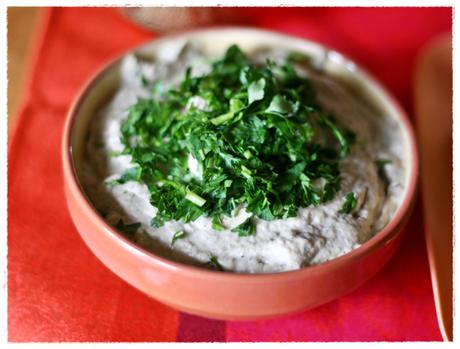
Baba Ghanoush – Eggplant and tahini dip
Another very famous dish, which often goes with falafel is Baba Ghanoush, a cream made with roasted eggplant and tahini. Quantities may vary according to personal tastes. Taste it while making it (trying not to eat it all;)) … and adjust it as you prefer! … Is really delicious and addictive!
• 2 large eggplants
• 5/6 tbsp of tahini
• Parsley
• salt
• lemon juice
• 1 clove of garlic
• 1 tsp coriander powder
Prick the eggplant with a fork, place them on a baking sheet and bake at 200 degrees for at least an hour or until tender and skin all wrinkled. Let them cool and peel them. Collect the pulp into a colander and press it to drain the water. Puree (in a blender) the pulp together with the tahini, lemon juice, garlic, coriander and salt. Taste and adjust according to your taste by adding more tahini, salt, coriander or lemon. Serve it with chopped parsley on top.
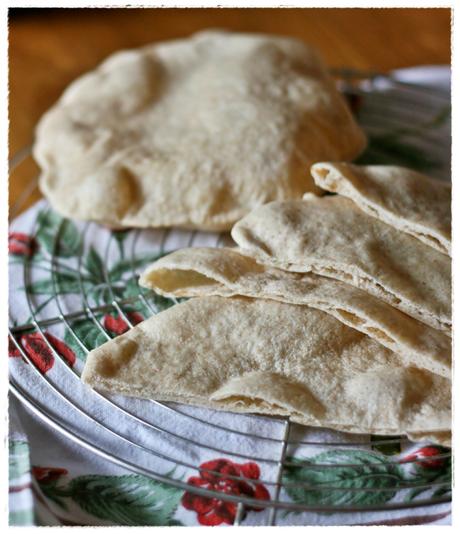
Aish Baladi – Egyptian whole wheat Pita Bread
Pita bread or Arab bread is one of most common bread also in Egypt. It’s a thin bread, soft (not crispy) with little crumb and an inside pocket that is created while cooking it. Generally the pita bread is baked on a stone in wood ovens but with some tricks you can make it at home as well.
If it’s made only with white flour is called Aish Shami, when mixed with whole wheat flour (like the one I made) is called Aish Baladi.
If you want you can garnish these breads with seeds and various spices. If you have any leftover, just heat them for few minutes in the oven and they’ll turn soft and fragrant again.
I had to make several attempts to obtain some decent pita breads! … at the end, my friends advices have been determining! …At first I roll out the bread and let rise flat but in doing so I got a bread too thick and with too much crumb (the one in the pics with falafel in). It was good, soft but not completely puffed. So I asked for advice and I learned that the dough should be left to rise a second time shaped into balls and rolled out in discs only before baking it, only this way you get a thin bread with little crumb. Then to make it puff and get the pocket inside it is better to use fan oven (first time I used static), at max temperature, place the baking tray on lower shelf and preferably close to the fan. With these tricks my breads puffed in few minutes, I got a nice pocket and they stay soft.
- for 4 pita breads:
• 100 gr all-purpose flour
• 50 gr whole wheat flour
• 1 tsp salt
• 1 tbsp extra virgin olive oil
• approximately 70 ml of water


